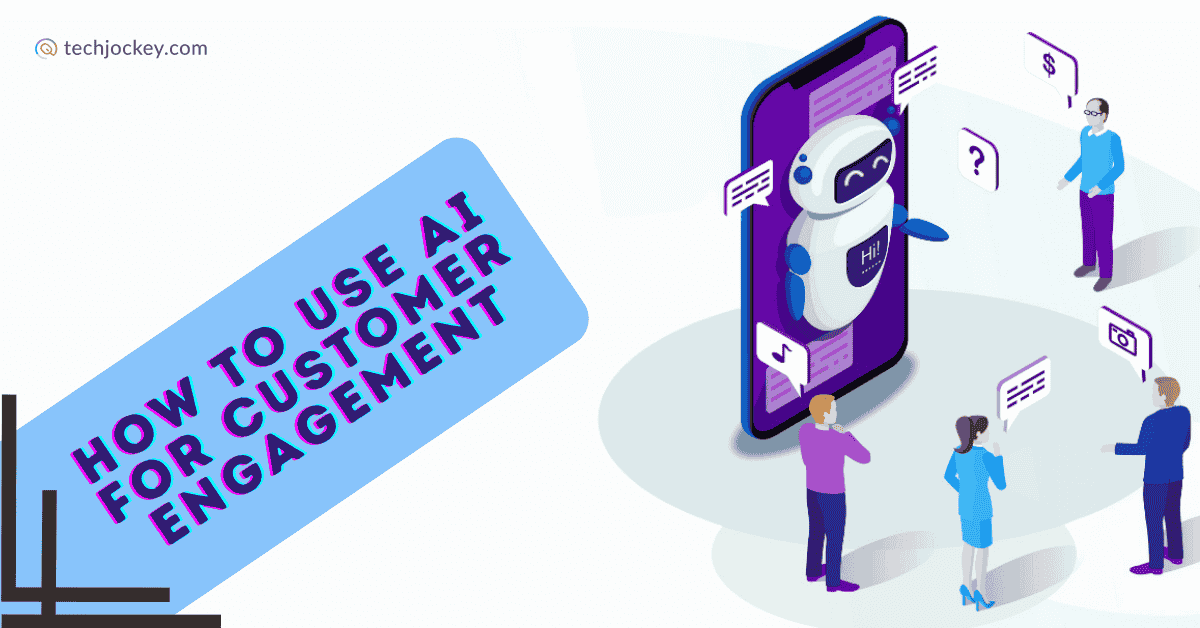
With attention spans getting shorter by the minute, brands and businesses are finding it increasingly hard to hold customer interest. But the rise of artificial intelligence is changing the game.
If projections are to be trusted, by the end of 2025, the global AI market will reach over $390 billion. Much of this growth will be driven by AI in the form of chatbots and virtual assistants. The extent would be so that, by 2027, the majority of customer interactions taking place across the globe would be handled without human agents.
This sheds ample light on the significance of AI for customer engagement, primarily in a world where customers expect 24/7 support. But what exactly does it take to effectively use AI in customer engagement? Let’s explore every detail, shall we?
By using AI in customer interaction, we mean making use of computer intelligence like customer experience management software and more to optimise how businesses talk with their customers. This not only includes chatbots, but also predictive analytics, NLP, ML, and more.
These AI-powered customer engagement tools monitor customer behaviour in order to help businesses see needs, offer personalised deals, and solve issues before they intensify. This approach not only builds customer trust but also boosts retention.
Customers have become increasingly impatient in recent years. They desire immediate resolutions, unique experiences, and 24-hour support. Meeting these demands manually, goes without saying, is expensive and inefficient. That is why the role of AI becomes significant…
Understanding the major AI technologies involved clarifies how transformative AI in customer engagement really is…
Kapture CX
Starting Price
₹ 4000.00 excl. GST
Here’s how brands are using AI for better customer engagement and retention (and you should too) to optimise their revenue…
Start by consolidating data from every website, email, chat, social media, and phone call. Apply AI-powered analytics on it to decipher patterns, segment customers, and detect preferences. This data is essential for all AI customer engagement strategies.
Deploy chatbots and voice-enabled virtual assistants that can converse and respond in natural language. Train them on all your business situations to give the right responses and advice to your customers.
Harness the capabilities of AI-driven algorithms that automatically customise interactions, offers, and content in real-time. Personalisation makes everything more relevant and appealing to the customers, which is core to successful AI-powered customer engagement.
Zepic
Starting Price
₹ 2700.00 excl. GST
Use AI to diagnose customer behaviours, as well as predict purchases, services required, or the probability of losing clients. This makes timely outreach possible, making customer service proactive.
Implement AI at every customer touchpoint. Customers frequently move between devices and platforms, and only stick around those that offer consistency and a seamless experience.
AI learns continuously from customer interactions, so keep updating your AI models and data to be responsive, accurate, and personalised. Over time, your AI customers will get to see and benefit from smarter and more intuitive interactions.
The advantages you gain from AI for customer engagement extend far beyond automation…
Though powerful, AI implementation comes with its own set of hurdles…
Proactively addressing these challenges ensures your artificial intelligence customer engagement strategy is sustainable and customer-centric.
SmartDX
Starting Price
$ 100.00
The future promises smarter, more human-like connections powered by AI. Here’s how…
Conclusion
Using AI for customer engagement, this isn’t a viral trend, but one that’s going to change how businesses interact with their clientele forever. It’s about creating meaningful and personal connections through automation and predictive insights.
So, don’t wait for your competitors to surpass you in this regard and start integrating artificial intelligence and customer engagement now. For smarter and more rewarding customer relationships are just a simple switch away, so make it count while you still can
With so much competition in the market, it’s important to make the right decision for… Read More
Artificial Intelligence is changing fast, almost faster than we can keep up. A few years… Read More
‘The global losses due to cybercrime are estimated to hit approximately 10.5 trillion USD per… Read More
With the advent of online shopping, or e-commerce as many term it, we are no… Read More
Today, artificial intelligence is everywhere. It powers apps, automates workflows, and even makes decisions for… Read More
Research says, ‘Retrieval-Augmented Generation (RAG) market is on track to grow from USD 1.2 billion… Read More